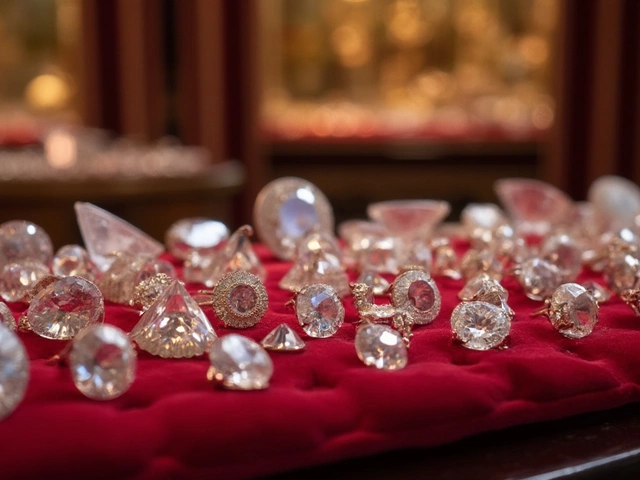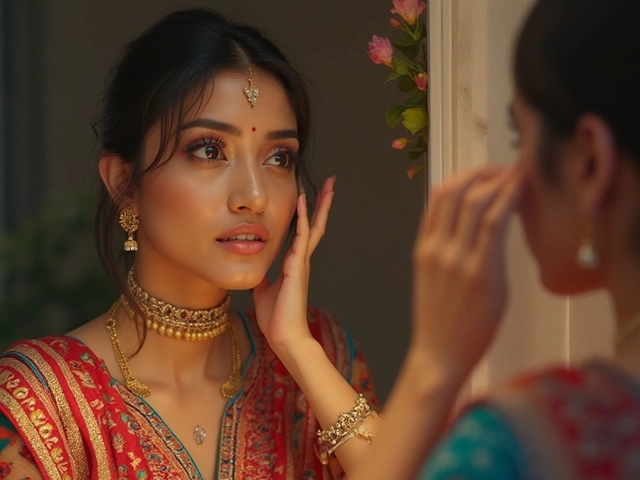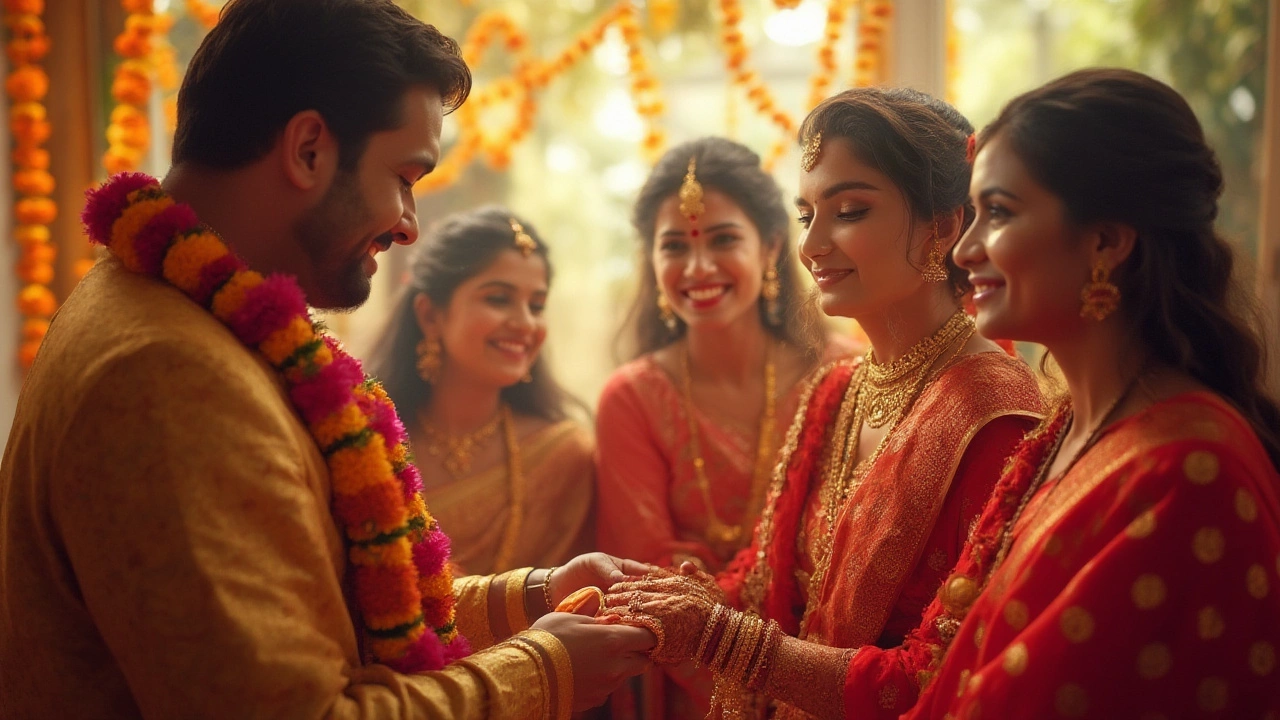
Nothing sets off family debates quite like wedding expenses, especially when it comes to something as iconic as the mangalsutra. In India, this black-and-gold-beaded necklace is more than jewelry – it’s a sign of marriage, love, and tradition rolled into one. Yet behind all the symbolism, there’s an awkward question: who’s really expected to foot the bill for this essential piece? Is it the groom, the bride, or someone else entirely?
The Tradition Behind Buying the Mangalsutra
If you ask almost any Indian aunty, the answer’s usually quick and confident: "The groom’s family buys the mangalsutra!" That’s how it’s been for generations. Traditionally, the mangalsutra – usually crafted with gold, black beads, and sometimes diamonds – is considered a symbol of a wife's marital status across many states in India. The necklace’s history goes back to Sanskrit scriptures, and it’s featured in wedding rituals across Hindu, Marathi, Tamil, Telugu, and even some Sikh and Buddhist marriages.
According to the age-old ritual, the groom ties the mangalsutra around the bride’s neck during the wedding ceremony, symbolizing their bond and his vow to protect her. It’s not just a piece of jewelry; it carries a sense of cultural protection and devotion. Because of its powerful meaning, the groom and his family are traditionally responsible for buying it. In Maharashtra, for instance, folks see the mangalsutra as a "must-have," often purchased from trusted family jewelers and sometimes handed down through generations as a family heirloom.
But, this isn’t a rule written in stone. Depending on the community, you’ll find all sorts of tweaks to who buys or pays for the mangalsutra. For example, in South India, it’s called ‘Thaali’ or ‘Thirumangalyam,’ and the type of gold, design, and even who gifts it can be different. Sometimes the bride’s family steps in, especially if they want to contribute to the marriage ceremony or elevate the stature of their wedding gifts. In Bengali weddings, the tradition can differ completely, since the mangalsutra itself may not always be used as a symbol of matrimony; they might use a ‘loha’ (iron bangle) or a ‘shakha pola’ (conch bangles) instead.
Here’s the kicker: even though the classic answer is "groom’s family buys it," in real life, much depends on the families involved, their financial circumstances, and what feels right to them.
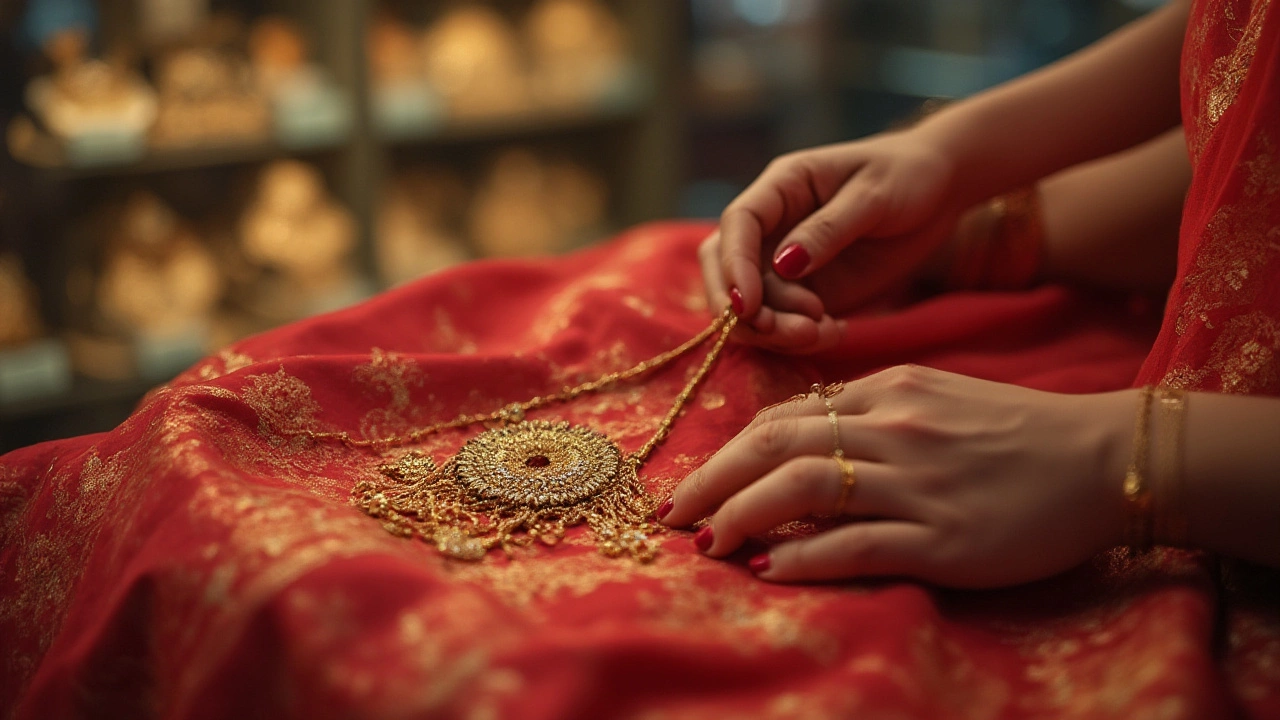
Modern Families: Shifting Trends & Sharing Costs
Fast forward to now, and you’ll spot something interesting. Indian weddings aren’t what they used to be, and neither are the decisions around buying the mangalsutra. Young couples, especially in urban areas, are rewriting the playbook. Instead of blindly sticking to tradition, they’re focusing on practicality, joint decision-making, and—let’s be honest—budgeting.
These days, it’s not uncommon for the couple to shop together, discuss designs, set a budget, and even split the cost, especially if the bride wants a specific brand or a modern twist (hello, diamond mangalsutra from Tanishq!). Sometimes, the bride herself picks up the tab, either because she wants to choose her own design, or because she sees the necklace as a personal investment. With online jewelry shopping growing, couples browse collections together from their living rooms. According to a 2024 survey by Indian e-jewelry retailer CaratLane, 38% of urban couples now buy the mangalsutra together, compared to just 14% a decade ago. The increasing presence of e-commerce is also changing transparency around price and design choices.
There’s also a growing trend where the bride’s parents pitch in as part of the wedding trousseau. A lot depends on local customs, family preferences, and—of course—the dreaded “what will people think?” For some conservative families, keeping traditions intact is non-negotiable; anything else is almost a scandal. For others, mixing things up is a chance to reflect a more equal partnership.
Here’s a quick look at how the trends are shifting in different parts of India, according to recent wedding reports:
| Region | Who Usually Buys the Mangalsutra? | Average Mangalsutra Spend (INR) |
|---|---|---|
| Maharashtra | Groom’s Family | 40,000–1,20,000 |
| Tamil Nadu | Bride’s Family or Both | 20,000–90,000 |
| Punjab | Groom’s Family/Not Common, if used | Varies |
| Urban Cities | Couple (Together) | 55,000–2,00,000 |
So next time you hear someone say “the groom’s side always pays,” you’ll know that’s only half the story. It’s now more about personal choice than family pressure. What makes the most sense for your situation?
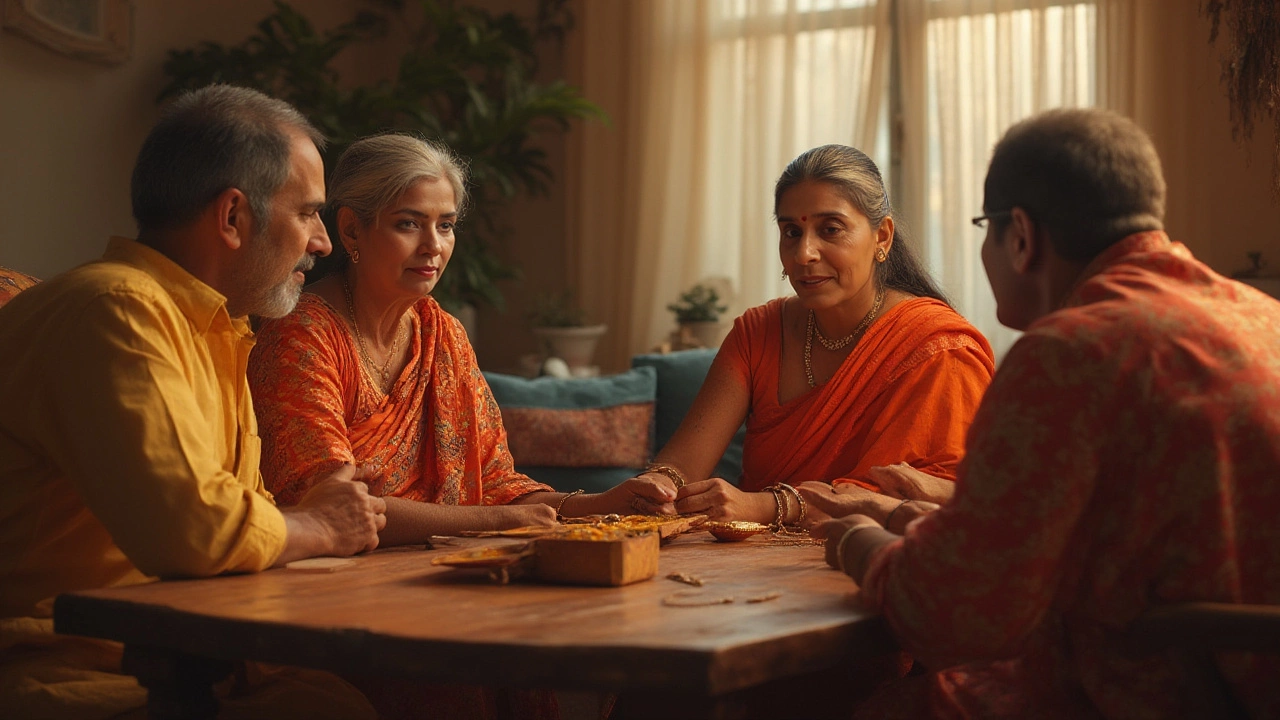
Practical Tips for Mangalsutra Buying in Modern Marriages
Buying a mangalsutra isn’t just about following tradition—it’s also about finding the right piece for your life and relationship. If you’re about to tie the knot, or even if you’re helping someone choose, there are a few things to keep in mind so the process is smooth (and argument-free!).
- Talk About Budget Early: This sounds obvious, but you’d be surprised how many families skip this step. Discuss whether you want something classic or designer, gold or diamond, big or minimalist. Set a price range before heading to the store.
- Make it Personal: The days of only black beads and a chunky gold chain are fading. Mangalsutras now come in sleek, delicate designs—great if you don’t want something old-school. Look out for brands that let you customize the chain length, pendant, or add a touch of sparkle.
- Consider Daily Wear: Not everyone wears hefty jewelry every day. If the bride has an active lifestyle or a professional job, a lighter, more comfortable mangalsutra might be the smarter choice.
- Check for Authenticity: Always buy from a reputable jeweler, and get a proper bill and purity certificate. Opting for BIS-hallmarked gold is a smart move, especially since gold prices are always on the rise and you want something that keeps value over time.
- Understand Cultural Significance: Even if you’re going for a contemporary look, know the symbols your mangalsutra should feature. For instance, some communities believe the black beads ward off evil, while others focus more on the gold content as a sign of prosperity.
- Don’t Forget Insurance: Sounds boring? Maybe, but insuring valuable jewelry can be a lifesaver in case of loss or theft, especially if you travel often or live in a big city.
One last thing—there’s honestly no single "correct" answer to the question "who buys the mangalsutra." Maybe tradition carries extra weight for your family, or maybe you’re the type to split the bill. At the end of the day, the mangalsutra’s true value isn’t in who paid for it, but in what it means to you and your partner.
So whether you’re shopping in a bustling Delhi market, an upmarket Mumbai boutique, or scrolling through an online store in Sydney (shoutout from Australia!), just remember what matters: choose a mangalsutra that feels right—to your life, your style, and yes, your budget. The right choice is the one that works for both of you, not just family tradition or wedding drama. That's the real future of this beautiful tradition.
